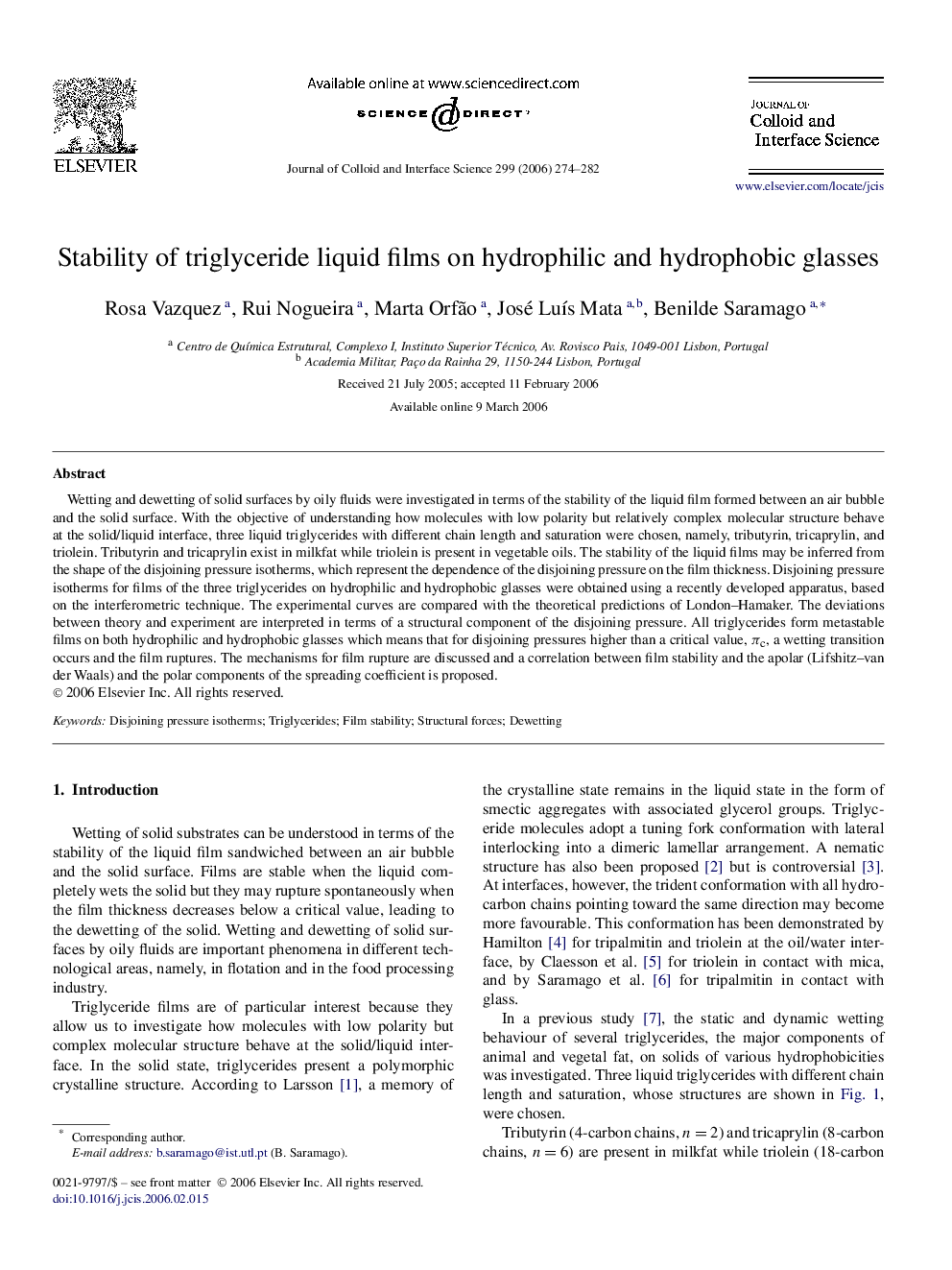| Article ID | Journal | Published Year | Pages | File Type |
|---|---|---|---|---|
| 613299 | Journal of Colloid and Interface Science | 2006 | 9 Pages |
Wetting and dewetting of solid surfaces by oily fluids were investigated in terms of the stability of the liquid film formed between an air bubble and the solid surface. With the objective of understanding how molecules with low polarity but relatively complex molecular structure behave at the solid/liquid interface, three liquid triglycerides with different chain length and saturation were chosen, namely, tributyrin, tricaprylin, and triolein. Tributyrin and tricaprylin exist in milkfat while triolein is present in vegetable oils. The stability of the liquid films may be inferred from the shape of the disjoining pressure isotherms, which represent the dependence of the disjoining pressure on the film thickness. Disjoining pressure isotherms for films of the three triglycerides on hydrophilic and hydrophobic glasses were obtained using a recently developed apparatus, based on the interferometric technique. The experimental curves are compared with the theoretical predictions of London–Hamaker. The deviations between theory and experiment are interpreted in terms of a structural component of the disjoining pressure. All triglycerides form metastable films on both hydrophilic and hydrophobic glasses which means that for disjoining pressures higher than a critical value, πcπc, a wetting transition occurs and the film ruptures. The mechanisms for film rupture are discussed and a correlation between film stability and the apolar (Lifshitz–van der Waals) and the polar components of the spreading coefficient is proposed.
Graphical abstractFigure optionsDownload full-size imageDownload as PowerPoint slide
